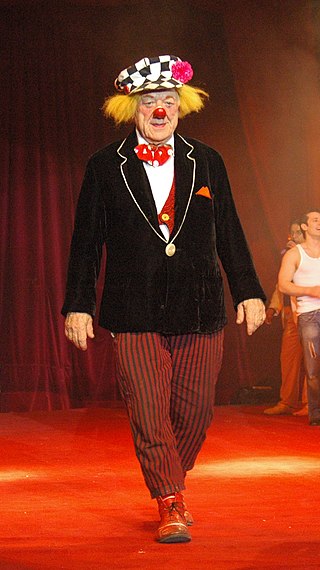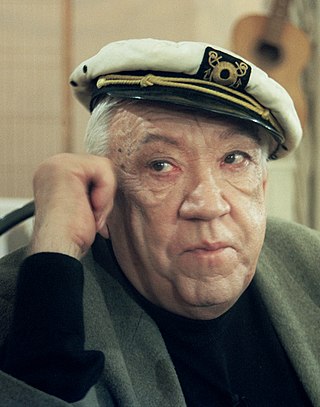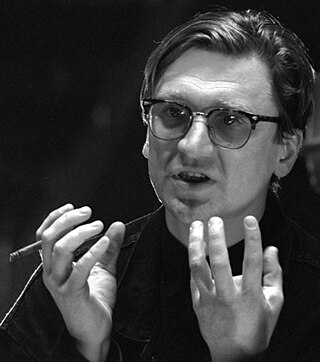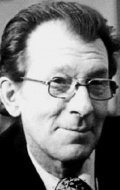
Moscow Circus on Tsvetnoi Boulevard, or Nikulin's Circus, is located on Tsvetnoi Boulevard in the Tverskoy District of central Moscow. It was the only circus in the city between 1926 and 1971.

Moscow Circus on Tsvetnoi Boulevard, or Nikulin's Circus, is located on Tsvetnoi Boulevard in the Tverskoy District of central Moscow. It was the only circus in the city between 1926 and 1971.
The circus was established by Albert Salamonsky descended from a family of Jewish circus riders. He constructed the circus building in Moscow on a place where usually travelling shows and vagarious artists performed at fairs. The very first performance was on October 12, 1880. Salamonsky was an innovative entrepreneur — he included non-circus artists like singers, choruses, folk ensembles, he staged shows with 35 riders in the ring and organized first Christmas shows for kids. Salamonsky also strived to make circus art be more accessible; he introduced cheaper rows and standees. [1]
Upon his death in 1913, the popularity of the circus decreased. [1]
After the Russian revolution, in 1919 the circus was nationalized by the Soviet Government. The Bolsheviks saw the circus art as a very important tool of mass propaganda and tried to ‘revolutionize’ the repertoire. Only in the 1930s did the artists manage to separate the shows from propaganda. In 1945 Nikolay Baikalov was assigned to the director's post; his epoch in the Tsvetnoy became one of the most important parts of the circus's history. [1]
The troupe was awarded the Order of Lenin in 1939. [2]
Since the middle of the 20th century, the Soviet circus was well known around the world for its professionalism. In the USSR all circuses were subordinate to the SoyuzGosTsirk (Soviet State Circus) Department, and all the artists were officially hired as its employees. [3]
Among the famous performers who worked there were clowns Karandash, Oleg Popov, Leonid Yengibarov and Yuri Nikulin, illusionist Emil Kio, performer Margarita Nazarova, the Durovs, Yuri Kuklachyov, etc. [4]
Yuri Nikulin, one of the most popular clowns in Russia and successful cinema actor, worked for the Tsvetnoy circus for 33 years. In 1981 he retired from performing and was assigned to the director's post. Nikulin managed the circus for fifteen years. [5] [6] During his office the company managed to survive through the crisis in the 1990s, when the country faced a political and economical collapse. [7] [8] He 'cleaned' the repertoire from Soviet propaganda heritage and welcomed the spirit of new age into the shows. [9]


Circus is a 1936 Soviet melodramatic comedy musical film. It was directed by Grigori Aleksandrov and Isidor Simkov at the Mosfilm studios. In his own words, it was conceived as "an eccentric comedy...a real side splitter."

Oleg Konstantinovich Popov was a Soviet and Russian clown and circus artist. He was awarded People's Artist of the USSR in 1969.

Yuri Vladimirovich Nikulin was a Soviet and Russian actor and clown who starred in many popular films. He is best known for his roles in Leonid Gaidai's comedies, such as The Diamond Arm and Kidnapping, Caucasian Style, although he occasionally starred in dramatic roles and performed in Moscow Circus.

The title Moscow State Circus is used for a variety of circuses. Most commonly, it refers to one of the two circus buildings in Moscow, the "Circus Nikulin" and the "Bolshoi Circus", or to traveling shows which may or may not be directly related to Russia.

Leonid Osipovich Utesov, also spelled Utyosov or Utiosov, born Lazar (Leyzer) Iosifovich Vaysbeyn or Weissbein, was a famous Soviet estrada singer, and comic actor, who became the first pop singer to be awarded the prestigious title of People's Artist of the USSR in 1965.

Valentin Alexandrovich Gneushev is a Russian circus director and choreographer.

Tsvetnoy Boulevard, called Trubny Boulevard before 1851, is a boulevard in the Meschansky District, central Moscow, Russia. Not a part of the Boulevard Ring, the street runs north/south from Petrovsky Boulevard and Rozhdestvensky Boulevard in the south to the Garden Ring in the north.

Yevgeny Alexandrovich Morgunov was a Soviet and Russian actor, film director, and script writer, Merited Artist of Russian SFSR (1978).

Mikhail Nikolayevich Rumyantsev, better known under his stage name Karandash, was a famous Soviet clown. He was a People's Artist of the USSR and a Hero of Socialist Labour, and was the teacher of the famous Russian clowns Oleg Popov and Yuri Nikulin.

Natalya Varley is a Soviet and Russian film and theater actress, who became famous in 1966 for her part in the comedy Kidnapping, Caucasian Style. In 1989 she was designated as a Meritorious Artist of RSFSR.

Tsvetnoy Bulvar is a Moscow Metro station on the Serpukhovsko-Timiryazevskaya Line, in the Tverskoy District of central Moscow. It was opened on 31 December 1988.
Sergey A. Pavlov is a Russian actor, clown, television director, writer and composer

Space Dogs is a 2010 Russian animated Adventure comedy historical drama film. The film is based on the Soviet space dogs Belka and Strelka, and honors the first animals who survived an orbital space trip, the Korabl-Sputnik 2 flight in August, 1960. In Poland it became the leader of the box-office on its first weekend, although in the United States it grossed poorly, making only $14,408 due to its limited release.
Lenin's Plan of "Monumental Propaganda" – is a strategy proposed by Vladimir Lenin of employing visual monumental art as an important means for propagating revolutionary and communist ideas. "The plan" had the significance of creating a large demand for monumental sculpture on a state level, and thus it stands at the origins of the Soviet school of sculpture. The "plan" consisted of two main projects: (1) – decorating buildings and other surfaces "traditionally used for banners and posters" with revolutionary slogans and memorial relief plaques; (2) – vast erection of "temporary, plaster-cast" monuments in honor of great revolutionary leaders.
Events from the year 1997 in Russia.

Mikhail Ivanovich Shuydin was a Soviet clown and acrobat-eccentric. People's Artist of the RSFSR. From 1950 he worked in the arena with Yury Nikulin, Member of the Great Patriotic War.

Burt Blague is a 4th generation artist, circus performer, comedian, director, teacher and producer.
Taisia Anatolievna Kornilova is a People's Artist of Russia, circus performer, elephant trainer, screenwriter, director, artistic director of variety-circus programs. She holds several certified Guinness World Records for her achievements in elephant training.

Elvina Mikhailovna Podchernikova-Elvorti was a People's Artist of Russia, circus performer, trainer, public figure.
Little Fugitive is a 1966 film, co-produced by USSR and Japan, directed by Eduard Bocharov and Teinosuke Kinugasa.
This article includes a list of general references, but it lacks sufficient corresponding inline citations .(August 2008) |
{{cite web}}: CS1 maint: multiple names: authors list (link)